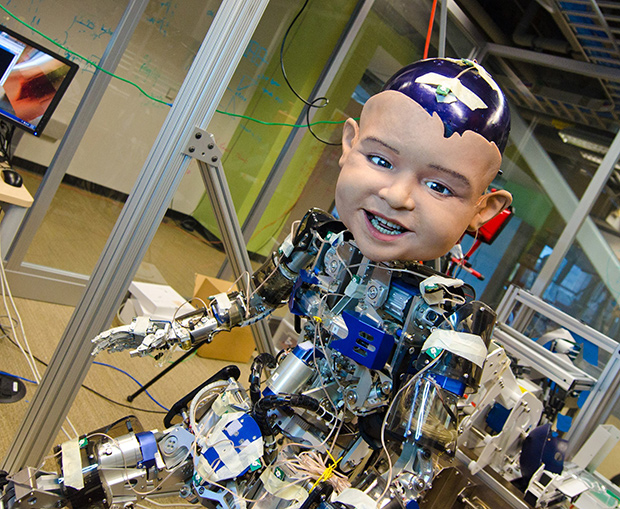Perhaps you’ve noticed that babies like to smile. Sometimes they smile because they’re feeling cheerful, but most of the time they’re grinning happily because they want you to smile — they’re basically manipulating you into obeying them. This is one of the findings of a study conducted by a team of computer scientists, roboticists, and developmental psychologists at the University of California, San Diego. To develop their theory, they recruited the help of a youthful-faced robot.

The university’s baby-faced robot, which may or may not be what nightmares are made of. Image source: UCSD.
Upon earlier research, the study analyzed the face-to-face interactions between 13 mothers and their infants. The team noted when and how often the moms and babies smiled. Using this data, the UCSD researchers programmed a robot known as Diego-San, which was initially created as a platform for studying the cognitive development of infants.
Once programmed, 32 undergrad students were recruited to interact with Diego-San during a series of three-minute sessions. By using a robotics tool called optimal control theory, it was possible for the scientists to essentially reverse-engineer the behavior, meaning they could establish what the babies’ goals were, based on the modeled behavior. Even though Diego-San is a robot, and the undergrads were (presumably) not the robot’s mother, the result was the same as with real sets of infants and mothers.
What was discovered was that the babies, and the robot, carefully timed their smiles in order to get smiles in return from the mothers or students. When the chances of getting a smile in return were slim, the infants tended not to bother smiling in the first place, though it’s not clear whether or not the they were knowingly doing so.

A clever smiling infant. Image source: compassionatesleepsolutions.com.
Babies are tricky little buggers, aren’t they?
It’s hoped that the discoveries found during this study may ultimately give psychologists a tool for studying non-verbal children and adults, such as those with autism.
Source: Gizmag
Advertisement
Learn more about Electronic Products Magazine





